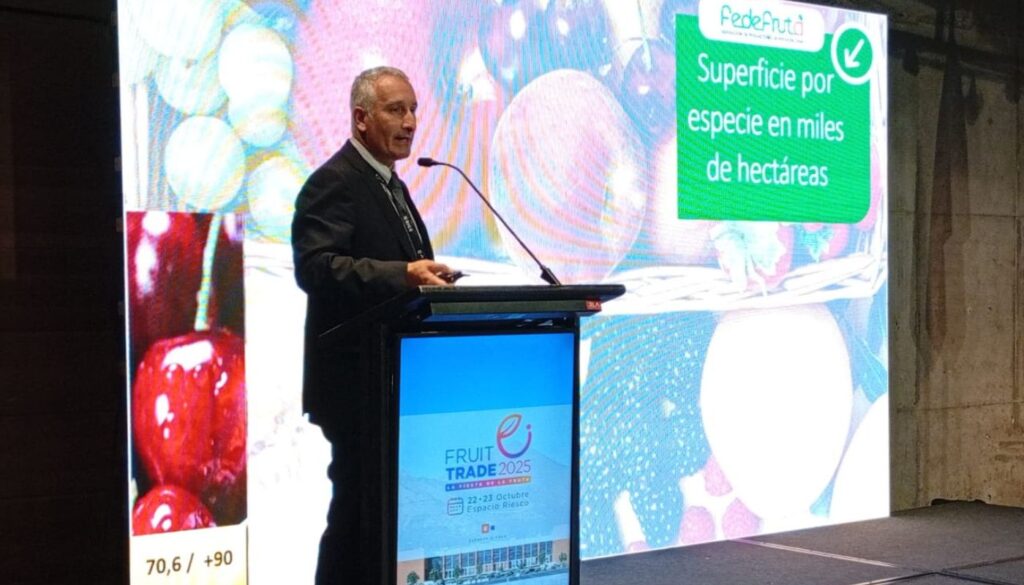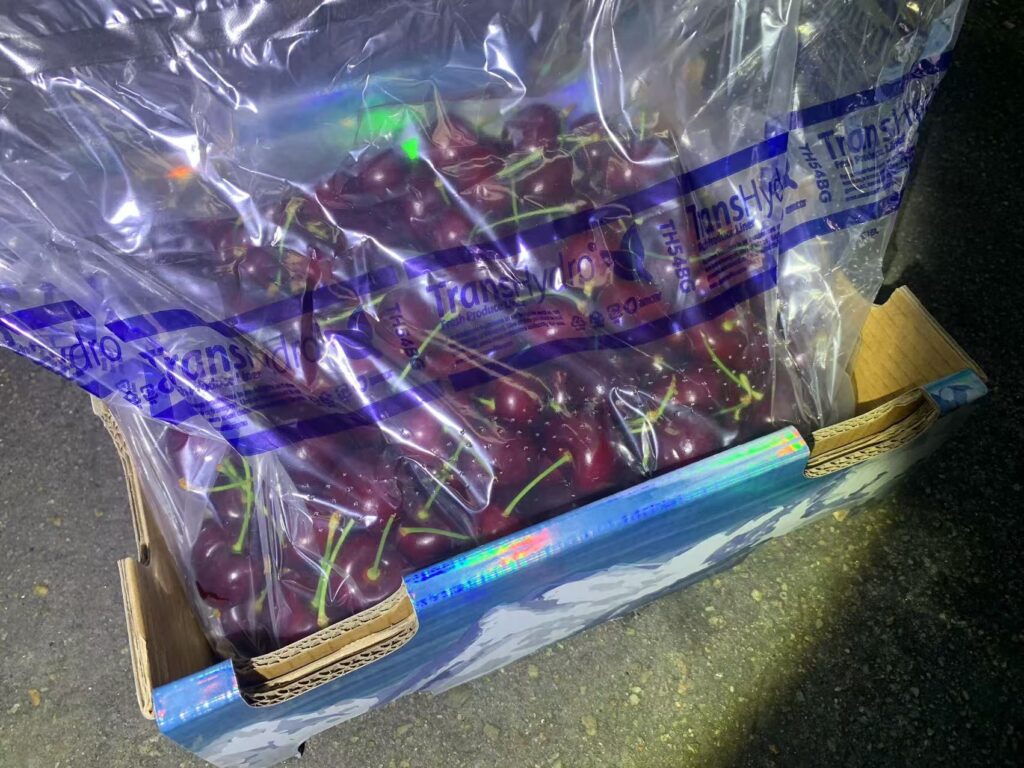
Postharvest is a critical stage in the shelf life of cherries, where multiple factors must be managed to maintain the quality of the fruit until it reaches the final consumer. Among these factors, Vapor Pressure Deficit (VPD) stands out as a decisive indicator to monitor and control dehydration during storage and transportation of cherries. Understanding the relationship between VPD and water loss in cherries can make a significant difference in preserving their freshness, texture and flavor.
The DPV measures the difference between the vapour pressure of the air and that of the fruit surface, i.e. the capacity of the surrounding air to absorb moisture. A high DPV suggests that the air can absorb more moisture, which could lead to further dehydration of the cherries if appropriate measures are not taken.
Cherries are highly perishable fruits with a thin and delicate skin, which makes them especially vulnerable to water loss during post-harvest. Dehydration is one of the main factors affecting their quality, mainly reflected in weight loss, pedicel browning and decreased pulp firmness. These changes not only impact appearance, but also reduce commercial value and shorten the shelf life of the fruit. For this reason, controlling relative humidity and temperature is essential to minimize water loss, and this is where DPV plays a decisive role.
The DPV becomes a valuable tool for adjusting environmental conditions in storage chambers and during transport. A low DPV indicates that the air is more saturated with moisture, reducing the risk of dehydration, while a high DPV suggests that the air has a greater capacity for moisture absorption, which could accelerate water loss in the fruit.
Over several seasons, the Johnson Industrial Projects research and development department has conducted various tests that have allowed us to more precisely identify the relationship between DPV and weight loss in cherries during post-harvest (Figure 1). The graph shows that, at low levels of DPV (between 0 and 0.5 kPa), the weight loss of cherries per hour of exposure is minimal, less than 0.1 %/h. On the other hand, at DPV values higher than 3 kPa (which can be observed during the harvest and storage of the fruit in collection centres in the fields), the weight loss reaches approximately 0.5 %/h. This information is very useful for controlling the dehydration of cherries in post-harvest and highlights the importance of keeping DPV under control to preserve the quality of the fruit.
Figure 1. Relationship between vapor pressure deficit (VPD) and postharvest weight loss of cherries.
To control DPV, it is essential to properly manage the temperature and relative humidity of the storage environment. Reducing the air temperature decreases its ability to hold moisture, which in turn reduces DPV and dehydration of cherries. Likewise, maintaining high relative humidity in the storage environment, through humidification systems that regulate water vapor in the air, is key to maintaining optimal DPV.
Constant monitoring of DPV during postharvest allows growers and exporters to make informed decisions to preserve cherry quality. Maintaining DPV within optimal ranges minimizes dehydration, resulting in fruit with improved appearance, texture and flavor, which increases shelf life and market value.
Vapor Pressure Deficit is an essential indicator to control the dehydration of cherries during post-harvest. Proper handling, through temperature and relative humidity control, will be crucial to ensure that cherries reach the final consumer in optimal conditions, preserving their freshness and quality. Understanding and monitoring VPD is essential to maintain the freshness and quality of cherries, ensuring their success in the global market.









